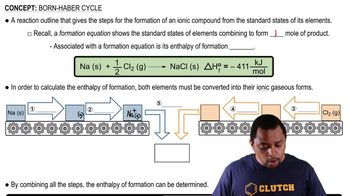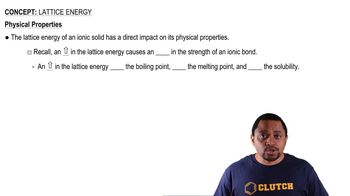Textbook Question
Consider the lattice energies of the following Group 2A compounds: BeH2, 3205 kJ/mol; MgH2, 2791 kJ/mol; CaH2, 2410 kJ/mol; SrH2, 2250 kJ/mol; BaH2, 2121 kJ/mol. (a) What is the oxidation number of H in these compounds?
 Verified step by step guidance
Verified step by step guidance



Consider the lattice energies of the following Group 2A compounds: BeH2, 3205 kJ/mol; MgH2, 2791 kJ/mol; CaH2, 2410 kJ/mol; SrH2, 2250 kJ/mol; BaH2, 2121 kJ/mol. (a) What is the oxidation number of H in these compounds?
The ionic compound CaO crystallizes with the same structure as sodium chloride (Figure 8.3). (a) In this structure, how many O2- are in contact with each Ca2+ ion (Hint: Remember the pattern of ions shown in Figure 8.3 repeats over and over again in all three directions.)
Consider the collection of nonmetallic elements O, P, Te, I, and B. (a) Which two would form the most polar single bond?
Consider the collection of nonmetallic elements O, P, Te, I, and B. (b) Which two would form the longest single bond?